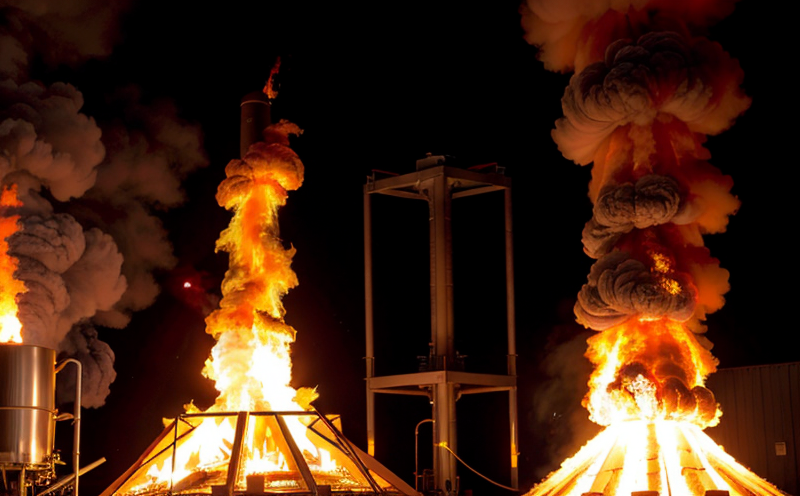Packaging Material Flammability Testing
The demand for safer and more sustainable packaging materials is increasing as industries worldwide strive to enhance product safety, comply with regulations, and meet consumer expectations. Packaging material flammability testing plays a crucial role in ensuring that packaging not only protects its contents but also does so without posing any fire hazards.
Flammable packaging can lead to significant risks during storage, transportation, and use, making it imperative for manufacturers to test their materials thoroughly before bringing them to market. This process involves simulating real-world conditions under which the material might be exposed to ignition sources such as sparks or flames. The primary goal is to determine the minimum amount of energy required to ignite the packaging and observe its behavior during combustion.
There are several standard test methods used globally for flammability testing, including those specified by ISO (International Organization for Standardization) and ASTM International. For instance, ISO 13943 specifies procedures for determining the flammability of non-metallic materials in a vertical position using a cone calorimeter. Another relevant standard is ASTM E648-15, which provides guidance on conducting both small-scale and large-scale tests to evaluate flame spread characteristics.
During testing, samples are prepared according to specific dimensions outlined by the chosen standard. These samples undergo rigorous examination in specialized equipment designed to replicate various environmental factors that may influence their flammability performance. The results from these tests provide valuable insights into the material's resistance to ignition and its ability to extinguish flames once they have been applied.
Understanding the implications of flammability testing extends beyond mere compliance with regulations; it also contributes significantly towards improving overall product quality and safety levels within supply chains. By incorporating reliable third-party laboratories like ours into your development process early on, you can identify potential issues early and make necessary adjustments before finalizing designs or launching products.
In summary, thorough flammability testing ensures that packaging materials meet rigorous international standards while providing peace of mind regarding product safety throughout their lifecycle. Whether you're developing new formulations or refining existing ones, our team is here to help ensure your materials stand up to scrutiny and pass muster with regulatory bodies worldwide.
Why It Matters
The importance of packaging material flammability testing cannot be overstated, especially given the increasing awareness around fire safety in various industries. This practice helps prevent accidents caused by ignitable containers or packages that could lead to serious injuries or fatalities.
- Product Safety: Ensures that products are safe for consumers and workers alike
- Regulatory Compliance: Meets international standards such as ISO 13943, ASTM E648-15, etc.
- Brand Reputation: Maintains a positive image by demonstrating commitment to quality and safety
- Customer Trust: Builds confidence among end-users who rely on your products for daily use
- Cost Efficiency: Identifies potential risks early in the design phase, reducing costly rework later down the line
- Sustainability: Encourages the development of eco-friendly materials that are less prone to combustion
In an increasingly competitive market where consumer trust is paramount, ensuring product safety through rigorous testing demonstrates a company's dedication to excellence. This not only protects public health but also fosters long-term relationships with customers and stakeholders.
Competitive Advantage and Market Impact
Incorporating packaging material flammability testing into your quality assurance processes offers several key benefits:
- Differentiation: Demonstrates a commitment to product safety, setting you apart from competitors who may overlook this critical aspect.
- Risk Mitigation: Reduces the likelihood of recalls and associated costs by identifying potential hazards early on.
- Credit with Stakeholders: Maintaining high standards enhances trust among consumers, investors, and other stakeholders.
- Innovation Opportunities: Understanding your materials' performance under different conditions can inspire new product innovations or process improvements.
Achieving excellence in flammability testing not only strengthens your brand but also contributes positively to the broader market by promoting safer practices across supply chains. By partnering with us, you're investing in a future where safety and sustainability go hand-in-hand.





